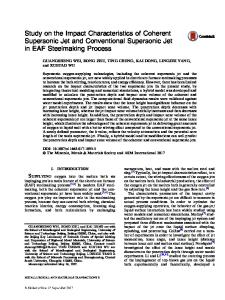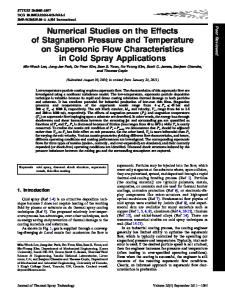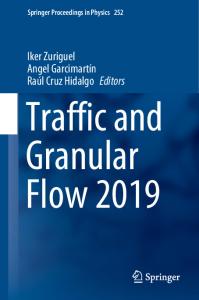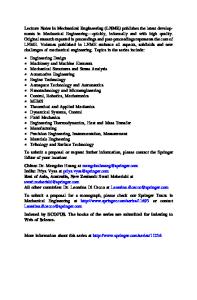Numerical Study on the Effect of Substrate Size on the Supersonic Jet Flow and Temperature Distribution Within the Subst
- PDF / 679,667 Bytes
- 8 Pages / 593.972 x 792 pts Page_size
- 22 Downloads / 370 Views
JTTEE5 21:628–635 DOI: 10.1007/s11666-011-9711-4 1059-9630/$19.00 Ó ASM International
Numerical Study on the Effect of Substrate Size on the Supersonic Jet Flow and Temperature Distribution Within the Substrate in Cold Spraying Shuo Yin, Xiao-fang Wang, Wen-ya Li, and Yue Li (Submitted August 27, 2011; in revised form October 25, 2011) This study investigates the effect of substrate size on the supersonic jet flow regime, particle acceleration and temperature distribution within the substrate in cold spraying. A computational fluid dynamics approach is employed in the present work to achieve this objective. The simulated results show that substrate diameter has some effect on the gas flow regime and the consequent particle motion. When the substrate diameter is smaller than the nozzle exit diameter, the thickness of the bow shock formed in front of the substrate is rather small, which contributes to increase the particle impact velocity. With increasing the substrate diameter, the bow shock thickness increases gradually up to the point at which the substrate diameter is beyond the nozzle exit diameter. A further increase beyond this has almost no effect on the flow regime and the bow shock thickness. Besides, the current numerical work also reveals that the temperature distribution within the substrate can be significantly influenced by substrate thickness. With an increase in substrate thickness, the substrate temperature presents a downward trend, which means that higher inlet temperature may be required for thick substrate to achieve the same preheating effect.
Keywords
cold spraying (CS), bow shock, supersonic jet, numerical simulation, substrate diameter, substrate temperature
1. Introduction In conventional thermal spraying (TS), such as the high-velocity oxygen-fuel (HVOF), the operation temperature is always above 3000 K. Such high temperature can melt the powder particles before they impact on the substrate, which significantly degrades the coating quality as a result of the oxidation at the particle surface (Ref 1). Warm spraying (WS), to some extent, can solve the
This article is an invited paper selected from presentations at the 2011 International Thermal Spray Conference and has been expanded from the original presentation. It is simultaneously published in Thermal Spray 2011: Proceedings of the International Thermal Spray Conference, Hamburg, Germany, September 27-29, 2011, Basil R. Marple, Arvind Agarwal, Margaret M. Hyland, Yuk-Chiu Lau, Chang-Jiu Li, Rogerio S. Lima, and Andre´ McDonald, Ed., ASM International, Materials Park, OH, 2011. Shuo Yin, Xiao-fang Wang, and Yue Li, School of Energy and Power Engineering, Dalian University of Technology, Dalian 116024, Liaoning China; and Wen-ya Li, Shaanxi Key Laboratory of Friction Welding Technologies, School of Materials Science and Engineering, Northwestern Polytechnical University, XiÕan 710072, Shaanxi China. Contact e-mail: [email protected].
628—Volume 21(3-4) June 2012
problem associated with the high temperature by injecting the coolin
Data Loading...











